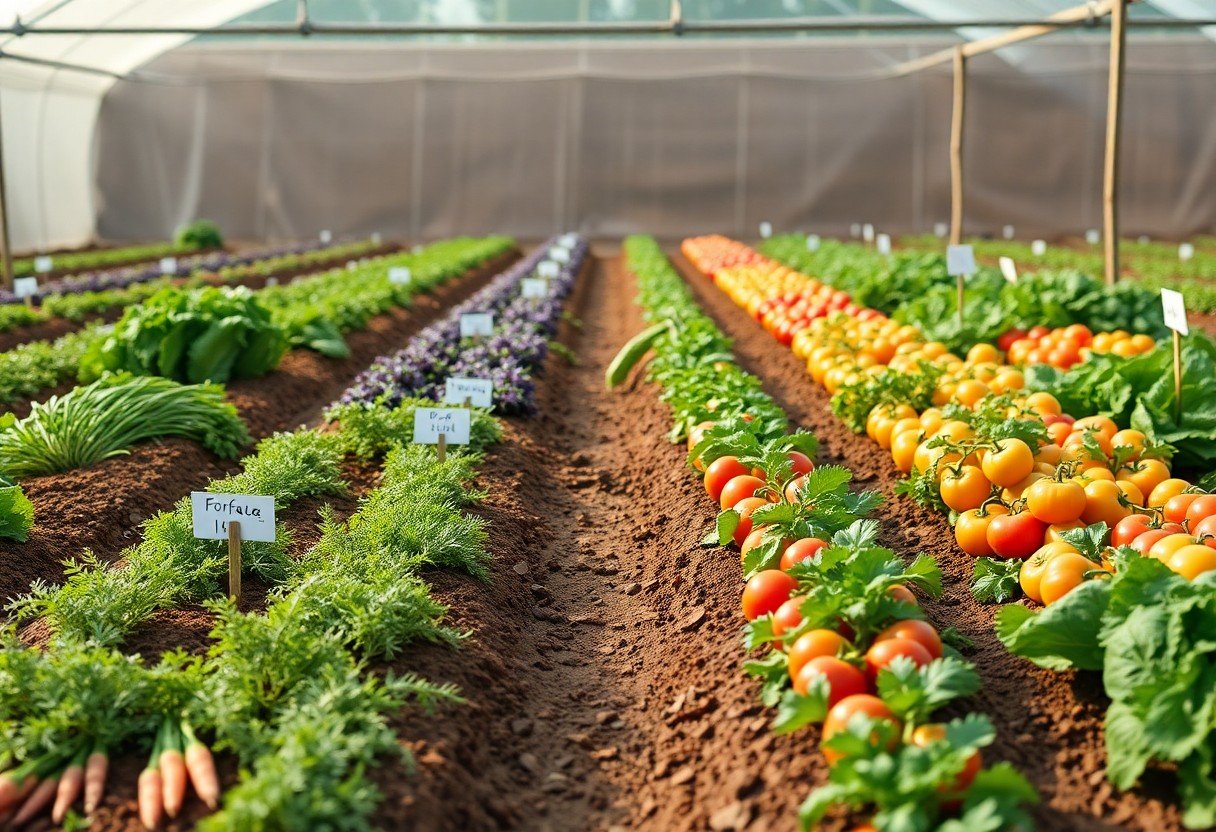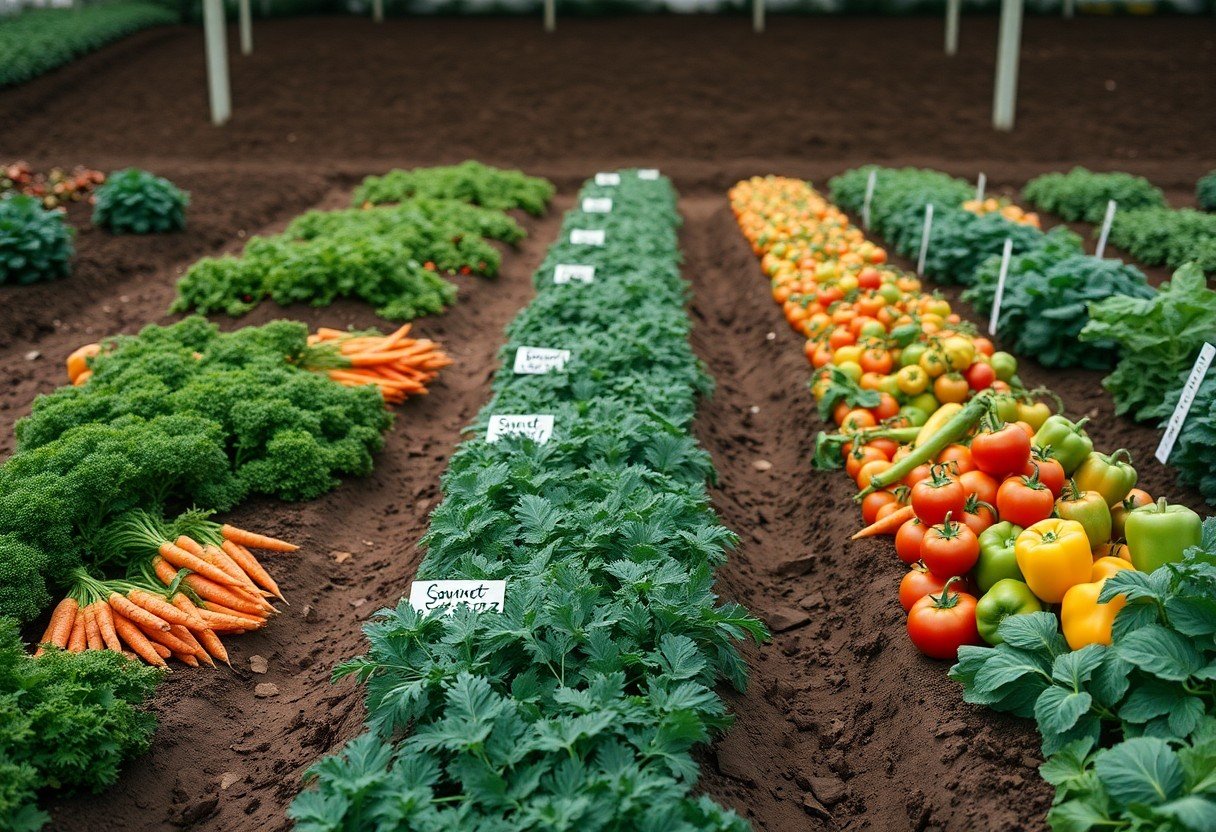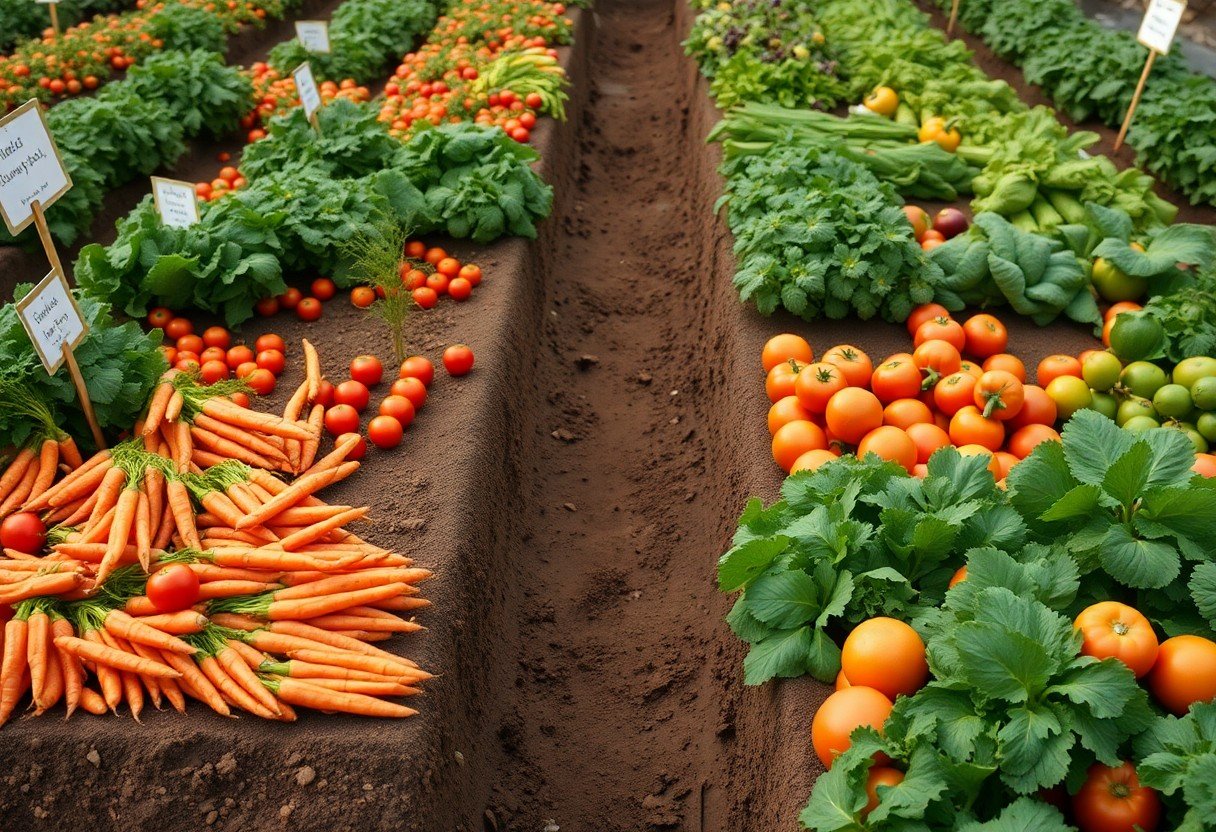You want to get the most out of your garden, and designing a well-planned vegetable layout is key to achieving this goal. As you prepare to plant, you’ll need to consider factors such as sunlight, soil quality, and crop rotation to ensure your garden thrives. By optimizing your vegetable layout, you can increase your yield, reduce waste, and enjoy a bountiful harvest from your garden. You will learn how to create a layout that works best for your space and needs.
Understanding Key Factors
A well-designed vegetable layout starts with considering key factors. You should think about:
- climate
- soil conditions
- space and sunlight requirements
. The key to a successful garden is understanding these factors.
Assessing Climate and Soil Conditions
Assuming you have a general idea of your garden’s conditions, you can begin assessing climate and soil conditions, which will help you choose the right vegetables to plant.
Evaluating Space and Sunlight Requirements
For optimal growth, you need to evaluate space and sunlight requirements for each vegetable type, taking into account your garden’s layout and orientation.
This process involves considering the mature size of each plant, as well as their spacing needs, to ensure you’re making the most of your garden’s space and providing the right amount of sunlight for each vegetable, allowing you to create a thriving and productive garden that meets your needs.
Planning Your Vegetable Layout
There’s no one-size-fits-all approach to designing a vegetable layout, as the ideal setup depends on your garden’s size, shape, and climate. You’ll need to consider the space you have available and the types of vegetables you want to grow.
Choosing the Right Vegetables for Your Climate
Adeptly selecting vegetables that thrive in your local climate is important for a successful harvest. You should choose varieties that are known to grow well in your area and are resistant to common pests and diseases.
Creating a Balanced and Diverse Garden
Deliberately designing a garden with a variety of vegetables will help ensure a bountiful harvest. You can mix and match different types of vegetables to create a unique and thriving garden that meets your needs.
Your garden’s diversity is key to its success, and creating a balanced layout will help you achieve this. You can group vegetables by their growing requirements, such as sunlight and water needs, to ensure that each plant receives the right conditions to thrive. By doing so, you’ll be able to enjoy a continuous harvest of fresh, delicious vegetables throughout the growing season.
Designing for Maximum Yield
If you want to optimize your garden’s yield, consider visiting Advice for first time gardener on garden plan to learn from experienced gardeners. This will help you create a well-planned layout for your vegetable garden.
Implementing Companion Planting Techniques
Techniques such as companion planting can enhance your garden’s productivity. You can pair plants that benefit from each other, like marigolds and tomatoes, to boost growth and deter pests.
Utilizing Vertical Gardening Methods
Methods like trellising and wall-mounted planters can help you make the most of your garden space. You can train vining plants to climb up trellises, freeing up space for other plants.
For instance, you can use a trellis to support pea plants, keeping them off the ground and maximizing their exposure to sunlight. This will not only increase your yield but also add visual appeal to your garden, making it a beautiful and productive space for you to enjoy.
Essential Tips for a Productive Garden
Not everyone knows how to maximize their garden yield. Consider the following:
- plant selection
- soil quality
- water management
- test your soil pH
- add organic matter
- use drip irrigation
- water in the morning
The key to a successful garden is balancing these factors to create an optimal growing environment for your plants.
Tips for Soil Preparation and Maintenance
With proper care, your soil will thrive. You should:
Any adjustments you make will have a significant impact on your garden’s overall health and productivity.
Strategies for Efficient Watering and Irrigation
For optimal growth, you need to water your plants effectively. You can:
Irrigation systems can be complex, but by understanding your plants’ water needs, you can create a system that supports their growth and minimizes waste, allowing you to make the most of your water resources and maintain a healthy and productive garden, as you learn to water your plants efficiently, you will see an improvement in your garden’s overall yield and health.
Managing Pests and Diseases
For a bountiful harvest, you need to consider managing pests and diseases in your garden, and you can get inspiration from 4×8 Raised Bed Vegetable Garden Layout Ideas to create a balanced ecosystem.
Natural Methods for Pest Control
Diseases and pests can be managed using natural methods, allowing you to maintain a healthy garden without resorting to chemicals, which you can incorporate into your garden design.
Preventative Measures for Common Diseases
Assuming you want to protect your plants, you should take preventative measures to avoid common diseases, such as crop rotation and proper sanitation, to keep your garden thriving.
Common diseases can be prevented by using techniques like companion planting, which you can use to your advantage to create a diverse and resilient garden, and by ensuring good air circulation and watering practices, you can minimize the risk of disease in your garden.
Maintaining Your Garden
Many factors contribute to a successful vegetable garden, and maintaining your garden is key to achieving maximum yield. You will need to ensure your garden receives adequate water, nutrients, and care throughout the growing season.
Scheduling Routine Garden Tasks
There’s no one-size-fits-all approach to scheduling garden tasks, but you can create a routine that works for you by considering factors like weather, soil conditions, and plant growth stages. You can then schedule tasks like watering, pruning, and fertilizing accordingly.
Monitoring and Adapting to Changes
Some garden changes can be anticipated, while others may catch you off guard, so you need to stay vigilant and adapt your strategies as needed. You should keep an eye on your plants’ health, watch for pests and diseases, and be prepared to make adjustments to your care routine.
This process of monitoring and adapting to changes in your garden requires a combination of observation, knowledge, and flexibility, as you will need to adjust your strategies based on the unique conditions of your garden, including weather patterns, soil quality, and pest activity, and by doing so, you will be able to respond effectively to any challenges that arise and optimize your garden’s yield.
Final Words
Taking this into account, you can now create a well-structured vegetable layout that maximizes your garden’s yield. By applying the tips and strategies outlined, you will be able to make the most of your garden space. For more information on optimizing your garden’s potential, visit How to Design the Best Garden Layout for Vegetables in Your Yard to further enhance your gardening skills and enjoy a bountiful harvest from your garden.



